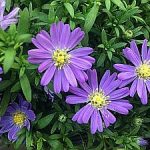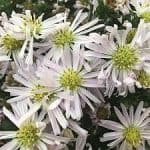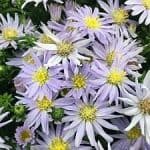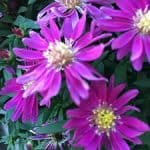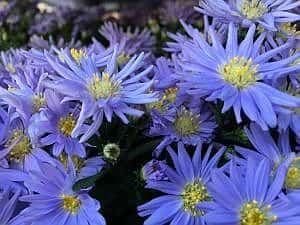
Autumn Asters
There are several native species of aster in Louisiana but the asters that bloom in Autumn usually catch my eye. Aster is a member of the Asteracea or Compositae family. This family consists of a large number of flowering plants but my focus will be on the small flowered plants that bloom in the Fall, known as the Autumn aster. Autumn aster, Aster oblongifolius has lavender flowers with yellow centers.
The aster plant forms mounds of leafy stems 2-3 feet tall and wide. Aster plants are slightly woody at the base. The Flower structure consists of a yellow center surrounded by petals in a radius from the center, like the sun. Thus, sunflowers and coneflowers are only a few of the flowers in the same family. Flowers appear in Fall usually October in our area and sometimes last up until frost. Most asters are perennial but some are annual or biennial. For longer flowering and bushier plants, pinch plants back 6-8 inches in Summer. The flowers of the aster are generally small and usually form a mass which hides the leaves when in bloom. Aster flowers may be lavender, blue, white, pink or variations in between with yellow centers but never yellow outer petals.
Asters are easy to grow. They require well-drained soil in full sun to light shade. Native or wild asters grow in sandy or clay soils. Propagate plants by division, cuttings or seeds in the Spring. Seed germination is generally low. Never over water or over fertilize asters as they become tall and require staking. Water asters at their roots to avoid powdery mildew problems. Many asters are drought resistant.

Asters work well in the front of garden beds, in containers and in flower arrangements. They give more variety of color and add old fashioned lushness to any garden as they are very textual. While asters are deer and rabbit resistant, they are also a food for the larvae of a number of butterfly species and attract birds, bees and butterflies as they are fragrant and colorful. You can find a number of varieties and cultivars at many of our local garden centers.
Submitted by Karen Blackburn

